This post may contain affiliate links. Learn more.
Here’s everything you need to know about cooking live lobster and how to eat a whole lobster. Includes an extensive video on finding and removing every last morsel of succulent lobster meat.
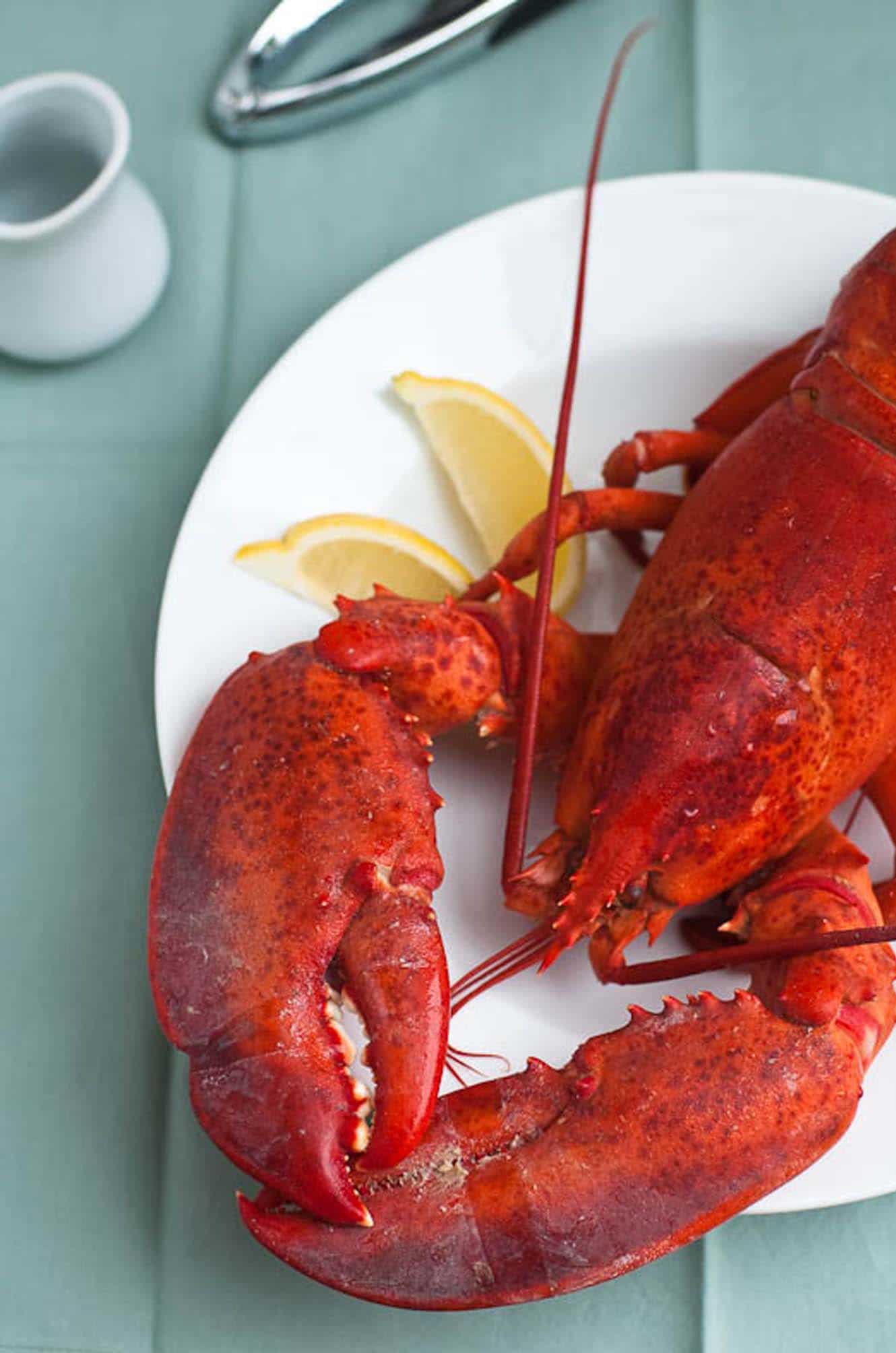
Why this recipe works
Choosing and cooking live lobster can feel intimidating at first, as can eating a whole lobster. I’ve been lucky enough to have gathered a lot of experience over the years. I’ve cooked and eaten many, many lobsters. And I was trained by the best — both in culinary school and by a partner who grew up helping to pick lobster meat like a pint-sized pro in coastal Maine.
I wanted to put together a comprehensive guide so you can feel confident in every step of the process and enjoy the ride. We’ll talk about how to:
- Shop for live lobster
- Store it properly until cooking time
- Kill the lobster as humanely as possible (though there is enduring debate on this topic)
- Cook any size lobster to succulent perfection
- Prepare my favorite lemon butter
- Eat your lobster one step at a time
This post includes a 24-minute step-by-step video where I break down a whole lobster and show you every detail.
Okay, friend. Let’s do it.
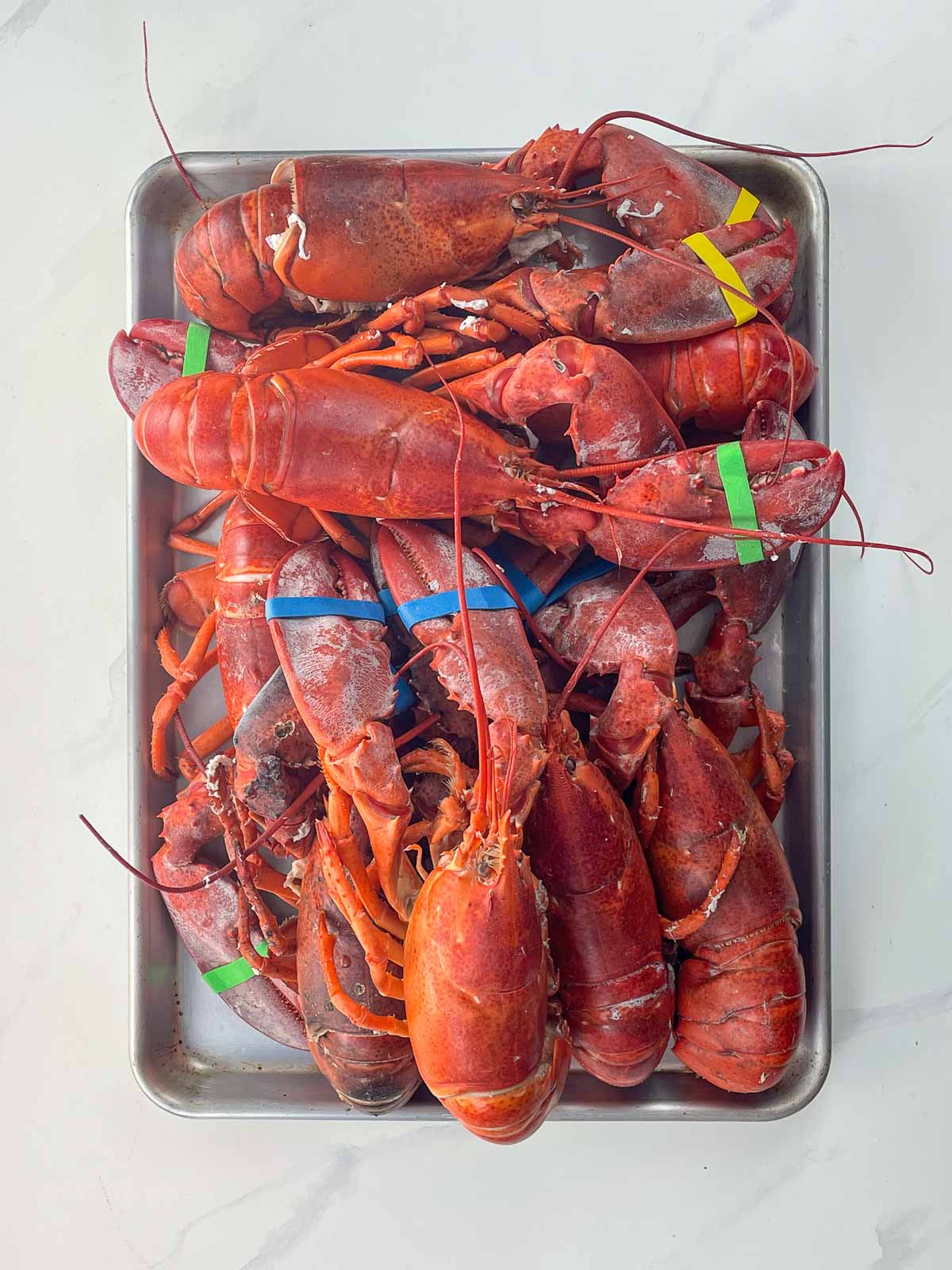
How to choose a live lobster
If possible, buy live lobsters from a dockside fish market or — if you’re not near the coast — a trusted local fish market or reputable online vendor who will ship from dockside overnight.
Hard shells vs. new shells (shedders)
Maine lobster season runs all year long but peaks between late June and late September. During this time, you may have the choice between hard-shell and new-shell lobsters (also called soft shells or shedders). Lobsters molt from time to time — up to 20 times in their first seven years of life, and then once a year — so that they can grow into a new, bigger shell. It takes the new shells some time to firm up.
Hard shells have a higher percentage of meat per pound, and the meat tends to be a little more consistent in texture and robust in flavor. Depending on when and where you’re buying, they may be the only type available, which is fine to fabulous, depending on your personal preferences.
Soft shells are more fragile and therefore not always shipped as widely. They’re much easier to eat, but they have less meat per pound, and the meat can be lighter in both flavor and texture. Some people really love them during the summer. Cooking them feels about the same as cooking hard shells, but eating them feels — to me at least — like a different experience.
What size lobster to buy
Whether you’re choosing your own lobsters or letting the folks at the market choose for you, you’ll need to know what approximate size you want.
Legally, Maine lobsters must measure between 3 1/4 and 5 inches from the back of the eyes to the back of the carapace (the body shell, before the tail starts). If they’re smaller or larger, the have to be tossed back in. Lobsters are also graded by weight and shell quality and priced accordingly — larger lobsters are usually more expensive per pound, not just overall.
I’ll just put my cards on the table and say that my favorite size to serve, and to eat, is one and three quarters to two pounds. Especially with hard-shells, this generous but not ridiculous size offers a very satisfying meal. If you’re hosting a very large party and want to offer a look of abundance and plenty of flexibility at a more reasonable price, I’d recommend one and a quarter pound lobsters.
An important note: The idea that smaller lobsters have more tender meat is pure mythology. Larger ones can be a little bit trickier to cook well, but toughness is a matter of user error, not biology.
Here’s an overview of the sizes you’re likely to find at most markets. You’ll also find culls sometimes. These lobsters are missing a claw and are therefore sold at a discount.
| Name | Size |
| Chix or chickens | 1 pound |
| Quarters | 1 1/4 pounds |
| Halves | 1 1/2 pounds |
| Deuces | 2 pounds |
Male or female?
If you want to get really next-level, you can also request a female or male lobster. Females are often full of delicious orange coral (also called roe), i.e. unfertilized eggs that cook up to a beautiful red-orange color.
If you’re into that sort of thing, you can let the fishmonger know you’d like females if possible. Or if you’re choosing your own, you can learn to spot them. Females tend to have wider tails and a softer, more translucent top pair of swimmerets — the furry-looking feelers on the underside of the tail. Males’ top swimmerets are bonier-looking and point up toward the body.
Choosing your own?
If you’re choosing your own lobsters, there’s one more thing to know. Choose the rowdiest looking buggers you can get. A lot of flailing about of the tail, legs, and claws is a good sign that they’re healthy and vibrant.
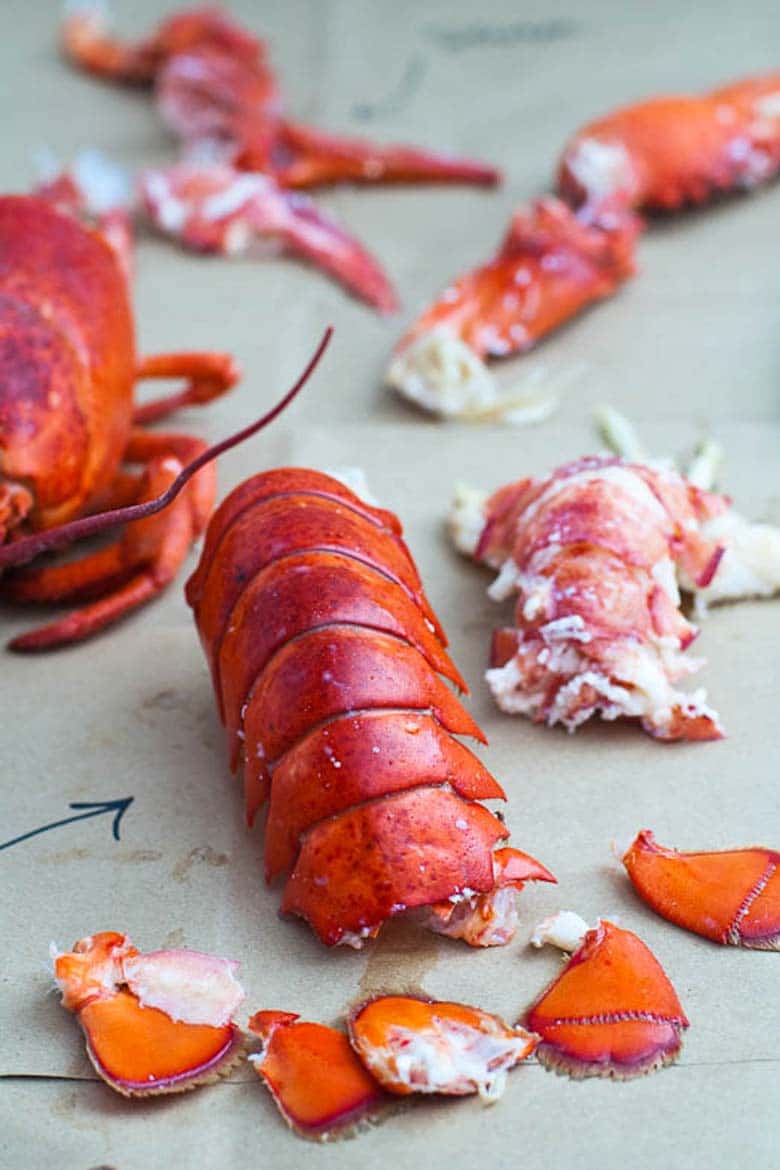
Storing live lobster
Bring your beauties home in a paper bag or crate and cook them the same day. Store them in the coldest part of your refrigerator until cooking time. (This is typically the upper rear of the fridge.) A few degrees can make a big difference toward keeping them sedated.
If they’ve been put into a plastic bag, leave it open, or transfer the lobsters to a different container that allows air to circulate.
Cooking live lobster
There are many ways of cooking live lobster, but for that classic Maine vibe and plenty of control over the cooking process, I like to steam them.
Prepare the pot
You’ll need your largest lidded pot and your largest burner. If you plan on cooking live lobster (and/or making stock of any kind) with any frequency and can find a place to store it, it’s worth investing in a decent stock pot. Lobsters steam more evenly when they’re not at all crowded in the pot. Here’s a guide to the sizes I’d recommend.
| Lobsters | Pot size |
| 2 | 5-quart minimum 8-quart is best |
| 4 | 12-quart |
| 8 | 20-quart |
| 12 | 24-quart |
Fill the pot with about two inches of water. Despite what you may have heard, there’s no need to salt it — lobsters have plenty of salinity on their own. Bring the water to a rapid boil over high heat.
Add the lobsters to the pot one at a time , and replace the lid right away.
Give the water a few minutes to come back to a semblance of a boil. This can take just a minute or two in a smaller pot with a couple of lobsters, or up to about five minutes in a pot that’s a little too big for your burner. You may not see steam escaping right away, and that’s okay — use your judgment. Start timing the cooking at this point.
Set the timer according to the following guideline:
- Based on the average size of one of the lobsters you’re cooking, cook for 8 minutes for the first pound, plus 3 minutes for each additional pound — so a batch of 1 3/4-pound lobsters would cook for about 11 minutes total. (DO NOT add up the total weight of the lobsters in the pot.)
When the lobsters are cooked, the shells will be bright red, and the meat will be tender and creamy white, with no hint of translucence and no hint of rubberiness. The internal temperature should read 135°F to 140°F when you insert an instant read thermometer into the underside of the tail close to where it meets the body. (I never actually do this, but you are welcome to.)
A word on “dispatching” lobsters humanely
There is scientific uncertainty as to whether lobsters feel pain and what is the most humane way to kill them when cooking live lobster. Here are the two most-used approaches. You can choose the one that suits you best.
- Place live lobsters head-first into the pot with water at a rolling boil. (This is the method I use.)
- Place live lobsters into the freezer for 10-15 minutes to sedate them without freezing the meat. Then plunge the tip of a chef’s knife right below the eyes and make a firm cut through the head. Place lobsters into the pot.
How to eat a whole lobster
Here, step by step, is how to eat a whole lobster. Read all the details in the steps below.
- Gather your tools
- Separate the claws and the tail from the body
- Eat the tail
- Eat the claws
- Chew the meat from the spindly legs
- Eat any coral and, if you like, tomalley
- Find and eat the beautiful nuggets of meat in the ribcage
Got 24 minutes? You can watch the whole thing in action. I think the joy on my face speaks for itself.
Prepare your tools
You’ll need:
- Metal lobster crackers (and maybe a mallet or hammer for the occasional really hard shells)
- Lobster picks
- One or two large, empty bowls
- A kitchen towel for each person or a roll of paper towels
Separate the claws and tail from the body
- Grasp the tail with your dominant hand and the body with your non-dominant one.
- Twist the tail away from you and the body toward you at the same time until the two parts separate easily.
- Place the tail on your plate.
- Next, still holding the body in your non-dominant hand, separate each claw, along with the knuckles (technically called carpus), by twisting each one off with your right hand where it meets the body.
- At this point you’ll have a body, a tail, and two claws-with-arms on your plate.
Eat the tail
Although the lobster tail may seem to the uninitiated like the prize piece to save for last, I prefer to eat it first. It’s an easy win to get you started and fuel you for the rest of the journey — and the claw and body meat are at least as succulent as the tail. Here’s how to do it.
- Twist off the tail fins one by one. Use your teeth to bite out the little piece of meat inside each one. (Sometimes this meat will stay attached to the tail when you twist — that’s fine too.)
- Hold the tail lengthwise in your two hands, with the red shell facing down toward your plate. Forcefully pull the sides of the shell apart from each other like you’re opening a book, until the red shell in the back snaps. This will help the tail stay straight for the next step.
- Straighten the tail as best you can and push your thumb into the hole created when you tore off the tail fins. Nudge it around a bit and apply gentle pressure until you’ve pushed the tail meat right out the top of the tail shell, all in one piece.
- Turn the underside of the tail meat up toward you. Holding the tail meat in your two hands, again open it like a book. By tearing the tail in half lengthwise, you will expose the “vein” running down the center, which is actually the end of the digestive tract. Its prominence varies, but it always exists. Remove it.
- Now you’re all set to eat the tail. Dip it into your lemon butter and enjoy! (You’ll do this with all the pieces going forward, too.)
Throughout the process, you will encounter a bit of hemolymph, the soft white matter between the meat and the shell. It’s edible, and I think it’s delicious.
Eat the claws
This is where your crackers and pick will come in handy, especially if for hard-shells. A lobster has a pincher claw and a crusher claw, and the anatomy differs slightly. The crusher claw is larger and less pointy and has a larger piece of inedible cartilage inside.
- Twist each claw apart from the knuckles to separate them.
- Crack the claw with your crackers or mallet right in the middle, until you can pull the shell apart enough to access the meat.
- Pull the pointy thumb-like part of the claw back until it snaps off. The meat may stay attached to the rest of the claw, or you may need to use your pick to remove it from the shell.
- Remove the meat from the large part of the claw.
- Buried inside the biggest section of the crusher claw meat is a flat, inedible piece of cartilage, so be sure to find and remove it. The pincher claw sometimes has a smaller piece of cartilage that needs to be removed, as well.
- Then, by twisting and using your crackers if necessary, separate the knuckles at each joint and push the meat out of each section.
Chew the meat from the spindly legs
Now on to the body.
- Twist off each of the spindly legs from the body as close to the base as possible.
- Remove any sort of hairy-looking meat that’s noticeably more gray and/or coarsely textured than the rest of what you’ve seen so far. There isn’t much lobster meat that’s inedible, but anything that looks furry is a piece of lung, heart, or brain, and you’ll want to avoid it.
- Then, working joint by joint, chew the meat out of the legs almost like you’d eat edamame.
Eat any coral and, if you like, tamale
- Inside the body, you’ll find some greenish-brownish looking stuff and, if you’re lucky, also some orangish-reddish looking stuff.
- The former is the tomalley (a filtering organ that’s basically the liver and pancreas combined). It has a lovely, rich taste and tender texture, and I often can’t resist eating it. If you’re concerned about toxins, you can avoid it.
- The latter is the roe or coral (unfertilized eggs). As long as they are red and opaque rather than black and gelatinous, they’ll be delicious and safe to eat, and I would encourage you to do so. If they’re black, it just means they haven’t been thoroughly cooked. This can happen, since we’ve cooked the lobsters to prioritize the tenderness of the meat itself. If you like, you can reserve them and finish cooking them later in a bit of butter.
Open the body and behold the multitude of wondrous meat
Some of the most succulent lobster is the small nuggets of meat in the ribcage. It takes a bit of persistence to find them, but you won’t want to miss it.
- Place both of your thumbs into the body cavity.
- With one thumb, gently hold back the mass of cartilage and meat while you use the other thumb to pry the shell off from the top, hingeing at the head. Discard the shell.
- You’ll be left with a few things you shouldn’t eat and, with a little persistence, about a quarter cup of the best meat in the lobster.
- Remove and discard the head, but don’t miss the prize nugget of meat right behind it.
- There’s a network of cartilage inside the body with an almost honeycomb-like structure. When gently handled, it can be opened up bit by bit, and the meat extracted almost like you would remove pomegranate seeds from their pulp.
- Remember to avoid the hairy-looking parts — you’ll know them when you see them.
If you’d like further visual instruction on how to eat a whole lobster, especially this part, I really recommend watching the video.
That’s it!
Congratulations — you’ve now got some experience with cooking live lobster and how to eat a whole lobster. All that’s left is taking out the trash and maybe taking a quick shower. xx
Expert tips and FAQs
I tend to prefer cooking live lobster shortly before serving, since reheating takes almost as much work as cooking them in the first place. But if you like, you can steam them up to 24 hours in advance. Once completely cooled, store in the fridge in airtight containers. To reheat, plunge into boiling water or set in a 350°F oven until warmed through.
Fully cooked leftovers will keep well in an airtight container in the fridge for three days. You can pick the meat before storing it or place the whole lobsters into the fridge and pick them later. I usually choose the latter route based on stamina, but it’s up to you.
If you’re really feeling ambitious, you can clean off the shells and place them in a resealable freezer bag. Pop them into the freezer for stock making. I’ll post about how to make lobster stock another time. It’s at least as easy as making chicken stock once you’ve gotten this far.
More lobster resources
- Maine lobster roll
- Connecticut-style lobster roll
- Lobster salad
- Butter-poached lobster tails
- Sous vide lobster tail
- Make your own top-split buns
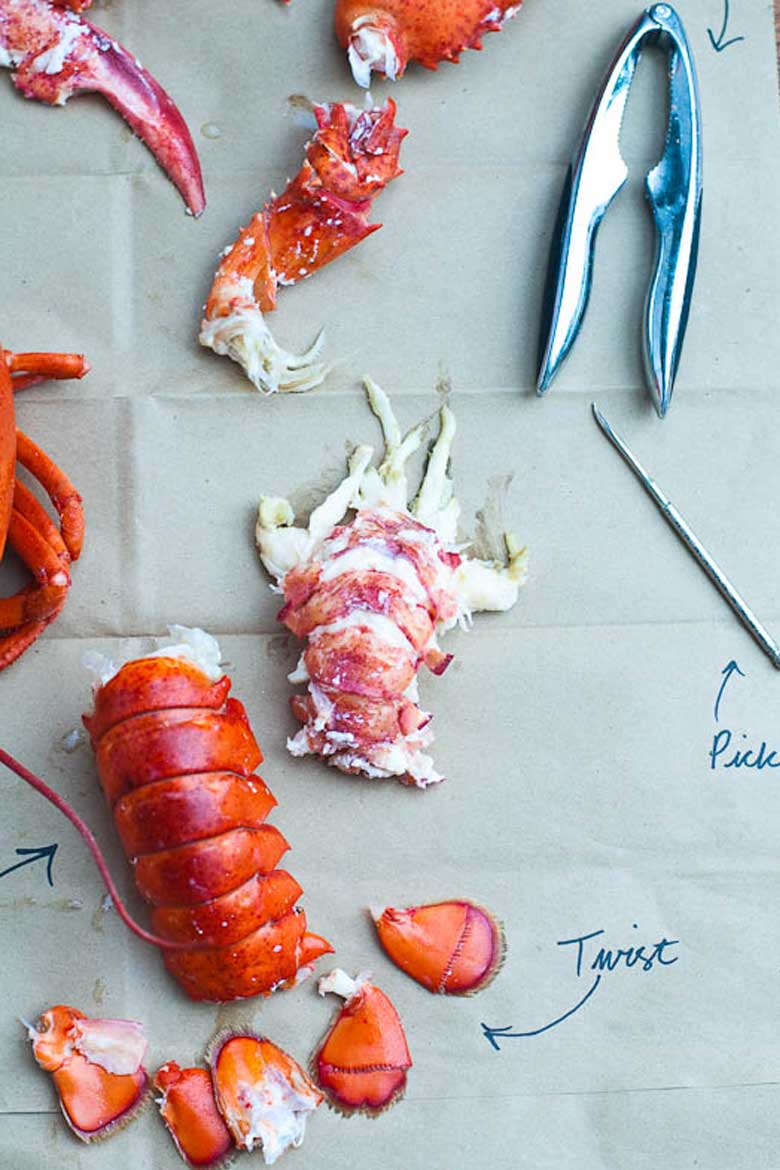
Hungry for more?
Subscribe to Umami Girl’s email updates, and follow along on Instagram.
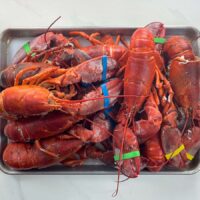
How to Cook a Live Lobster
Ingredients
- 4 live lobsters, I recommend 1.75 to 2 pounds each
- 16 tablespoons (224 grams) cultured, salted butter
- ¼ cup (60 ml) freshly squeezed lemon juice
Instructions
- Fill a large pot with two inches of water. Despite what you may have seen elsewhere, there is no need to salt it. Lobsters have plenty of salinity of their own. Cover and bring to a rolling boil.
- One by one, place lobsters head-first into the pot with the elastic bands still on their claws. Do this carefully but as quickly as possible and replace the lid right away.
- Give the water a few minutes to come back to a semblance of a boil. This can take just a minute or two in a smaller pot with a couple of lobsters, or up to about five minutes in a pot that's a little too big for your burner. You may not see steam escaping right away, and that's okay — use your judgment. At this point, set a timer as follows, based on the average size lobster you're cooking: 8 minutes for the first pound, plus three minutes for each additional pound. So a batch of 1.75-pound lobsters would cook for 11 minutes.
- If you're cooking a large batch, carefully remove the lid about halfway through cooking time and rearrange the lobsters so they'll cook more evenly. (This step is optional but can be helpful. Alternatively, if some lobsters are bigger than others, you can place those into the pot first and avoid having to rearrange them.)
- When the timer rings, carefully remove each lobster with tongs and place on a serving tray or individual plates. Let cool for at least five minutes.
- While the lobsters cool a bit, place the butter into a very small pot and melt over medium-low heat. Despite what you may see elsewhere, there is no need to remove the milk solids. They're the best-tasting part of the butter.
- Off the heat, whisk in the lemon juice. Pour lemon butter into ramekins and serve one alongside each lobster.
Notes
- 1. It's important to choose a pot that won't crowd the lobsters while cooking. Here are my recommendations on sizing. For two lobsters, a minimum size of 5 quarts, preferably an 8-quart stock pot. For four lobsters, 12 quarts. For eight lobsters, 20 quarts. For 12 lobsters, 24 quarts.
- There is scientific uncertainty as to whether lobsters feel pain and what is the most humane way to kill them for cooking. Here are the two most-used approaches. You can choose the one that suits you best: Place live lobsters head-first into the pot with water at a rolling boil. (This is the method I use.) Or place live lobsters into the freezer for 10-15 minutes to sedate them without freezing the meat. Then plunge the tip of a chef's knife right below the eyes and make a firm cut through the head. Place lobsters into the pot.
- I tend to cook live lobsters shortly before serving, since reheating takes almost as much work as cooking them in the first place. But if you like, you can steam them up to 24 hours in advance. Once completely cooled, store in the fridge in airtight containers. To reheat, plunge into boiling water or set in a 350°F oven until warmed through.
- Fully cooked leftovers will keep well in an airtight container in the fridge for three days. You can pick the meat before storing it or place the whole lobsters into the fridge and pick them later. I usually choose the latter route based on stamina, but it's up to you.
- If you’re really feeling ambitious, you can clean off the shells and place them in a resealable freezer bag. Pop them into the freezer for stock making. I’ll post about how to make lobster stock another time. It’s at least as easy as making chicken stock once you’ve gotten this far.
Nutrition
Nutrition information is automatically calculated, so should only be used as an approximation.
Hungry for more?
Subscribe to Umami Girl’s email updates, and follow along on Instagram.
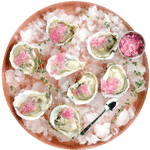

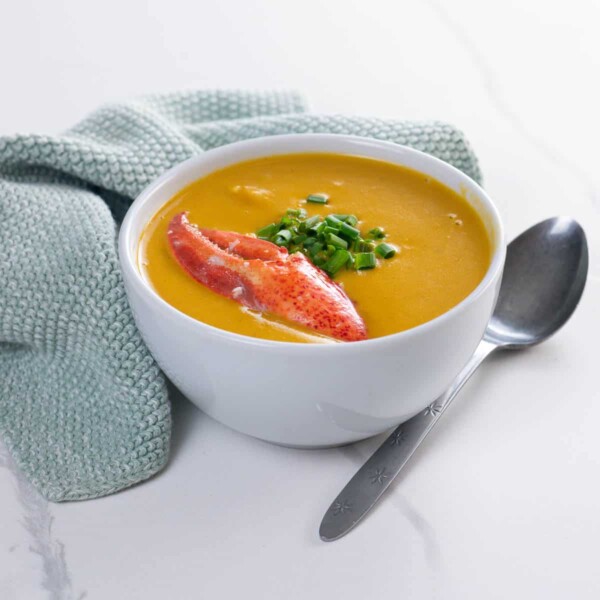
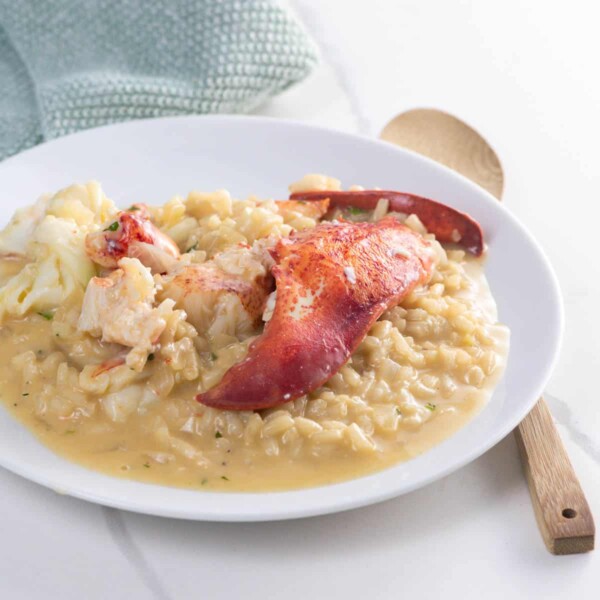
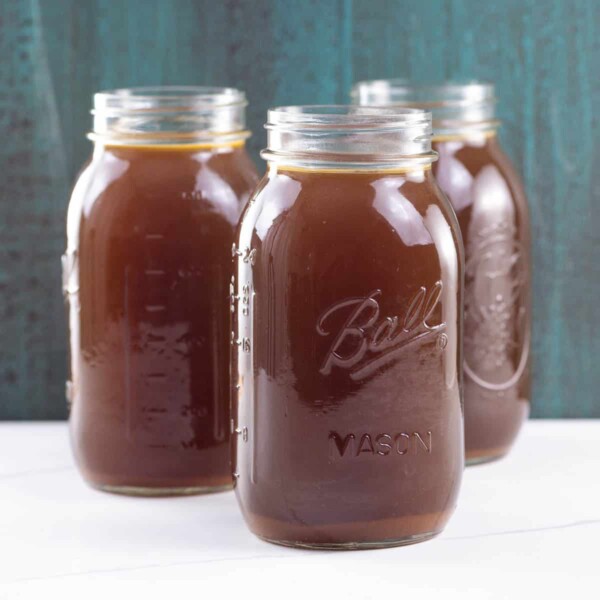
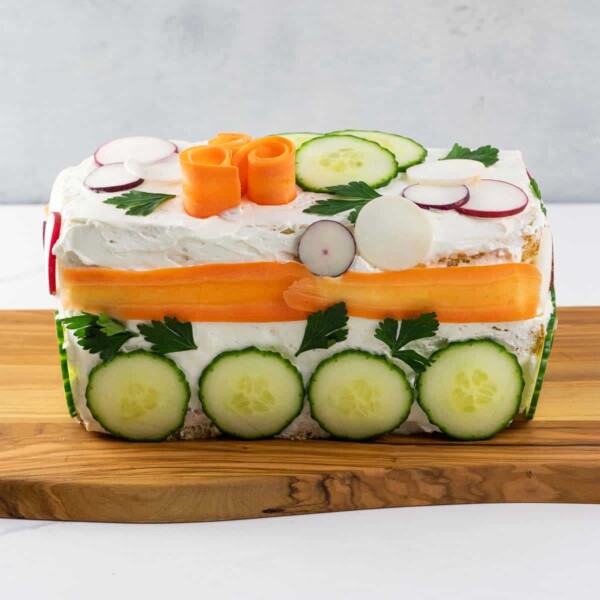







Great story =).Thank you so much for sharing.
I love this! My whole family’s from Boston, so I too have a poignant love (and many family photos) with the crustacean. Lobster boils every summer! Thanks for a post reminding me of them while I’m on the west coast.
Hi Corianda, thanks for visiting! I just checked out some of your art, and it’s really beautiful. Glad to see you’re focused on eating these days, but don’t forget to paint, please. I want to see MORE of your work. 🙂
Amusing and informative, a joy to read. Thanks for posting 🙂
Thank you so much.
There are few things I love more than well-cooked lobster.
Great story!
We love lobsta and kahn! For about a decade, when my kids were in their teens, we’d spend some of our summer vacation time with friends on a lake in the Belgrade Lakes area of ME. …let us not forget the Whoopie Pie!
You might like to try my approach to crustacean deconstruction. It has now evolved to relying solely on a good pair of kitchen/poultry sheers.
Legs, broken away at each joint, simply go in the mouth using the teeth to perfect a ‘squeezing’, or ‘peristaltic’ action to remove the contents.
All resulting in a clean, no small splinters; and a no shooting juices across the table operation!
(….and please pass me your tamale and roe, thank-you)
Henry Doll, I’ve missed your contributions here. Especially because you use phrases like “peristaltic action.” And extra much because you don’t use phrases like “reverse peristaltic action.” Welcome back, and thanks for the tips.
Well played! I went to college in Maine and have been lucky enough to learn how to dismember a lobster from several downeast lobstermen. Your description is spot on. It’s always a shame to me when people toss the whole head away and only eat the tail and claws. Absolutely tragic! Great description…I might have to pass this on to some of my lobster inept friends. Cheers!
Hi Dave, thanks for contributing that gloss of Maine lobsterman credibility! Cope is sort of unflappable and probably doesn’t care one way or the other whether people approve of his method, regardless of who they are. Me, though, I really appreciate a good flapping.
Too right about the tail. I always pity the people who save it for last. Amateurs.
Still, I feel like I would happily attend a pity party for amateur lobster pickers any day of the week….
Loved reading your humorous rendition of how you snagged the earnest preppy college boy who spent his summers in Maine learning how to properly pick lobster meat! You snagged a good one!
Thanks, Eva. I know I did!